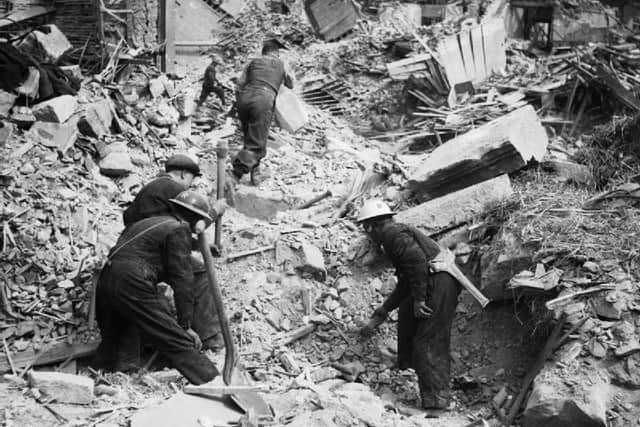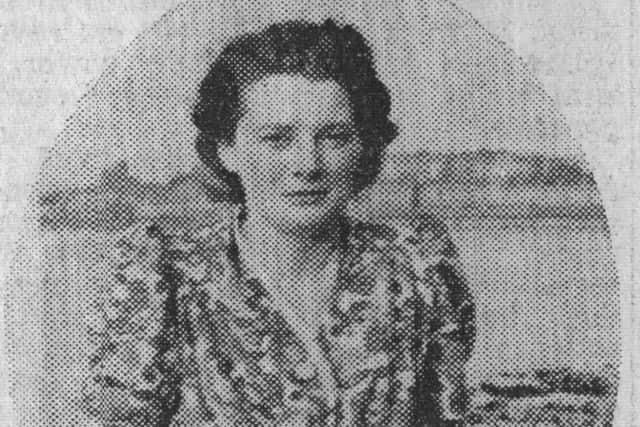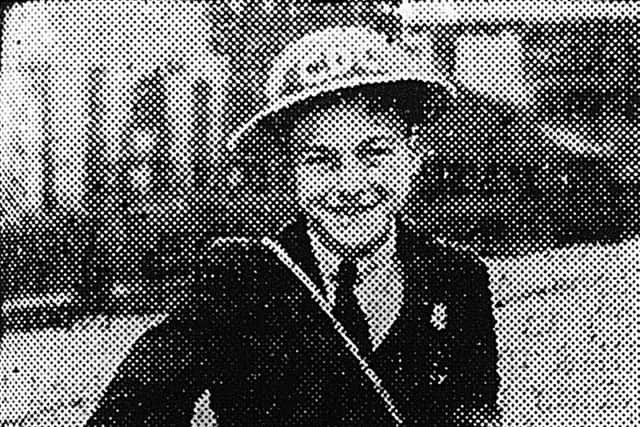Civilians risked their lives to rescue others in Belfast blitz
and live on Freeview channel 276
Nearly 1,000 people died, mostly civilians, with 2,500 injured and 50,000 left homeless. Today’s date marks the biggest raid, with a commemoration event organised by the Northern Ireland War Memorial at 11am at Belfast City Cemetery. (Details at niwarmemorial.org)
Nigel Henderson’s email also highlighted the city folk “honoured for bravery” and he now shares some of their remarkable stories here. At least 20 received bravery awards, with three George Medals (GM) and nine British Empire Medals (BEM).
Advertisement
Hide AdAdvertisement
Hide AdJohn Shaw (46), an Electrical Foreman at the Belfast Electricity Department and a Divisional Superintendent in the St. John Ambulance Brigade, became a Member of the Order of the British Empire for ‘devotion to duty’ at the Laganbank Power Station.


Three members of staff at the Ulster Hospital on Templemore Avenue were commended for their actions on the 15th/16th April - matron Eleanor Elizabeth Aicken (37), radiographer Isobel Margaret Dickson (34), and honorary surgeon Robert John McConnell (57).
Three George Medals and two British Empire Medals were awarded to members of the Royal Ulster Constabulary. Constables Alexander McCusker (44) and William Brett (52) from the Leopold Street Barracks were awarded the GM for rescue work in Ottawa Street and Ohio Street.
On the same night, the York Street Flax Spinning Factory received a direct hit. The debris and blast destroyed 42 houses in Sussex Street and Vere Street.
Advertisement
Hide AdAdvertisement
Hide AdConstables Robert Moore (43) and Alfred King (36), from York Street Barracks, were awarded the GM and the BEM respectively for rescue work, specifically at the home of the McSorley family at 74 Vere Street.


A unit of the Auxiliary Fire Service was travelling along Royal Avenue when their vehicle was damaged by an exploding bomb. One man died and another died later of his injuries. The rest of the crew carried the pump to their designated location and fought fires through the night and next day.
Patrol Officer John Walsh (36), a tram driver, leading fireman Robert Clyde Rainey (40), a radio trader, and fireman James Jameson Lee (28), a salesman, were commended for their devotion to duty. The BEM was awarded to seven members of Belfast’s Civil Defence Services.
During an air raid in May, auxiliary nurse Denise Forster (21) was on duty at the Ambulance Depot on the Holywood Road when it was demolished by a high explosive bomb. After extricating herself from the rubble she pulled others to safety and then went with an ambulance crew to another target zone.
Advertisement
Hide AdAdvertisement
Hide AdThree Civil Defence teenage boy-messengers were recommended for the George Medal for devotion to duty in April 1941. Messenger Alexander Cecil Hill (17), an office assistant from Convention Street, received the BEM. Although severely shaken by an almost direct-hit explosion, Alexander directed traffic at a main road whilst bombs were falling all around. Later, while delivering an urgent message to the Report Centre, he was blown off his bicycle twice by explosions, each time remounting to deliver the message.


With telephone communications dislocated by explosions, messenger George William Otway Woodward (18) of Glenburn Park delivered vital messages and when his bike was damaged he continued to deliver them on foot. Young George received a commendation.
BEMs were awarded to bomb identification officer William John Ford (51) and messenger William Ernest Bennett (15) of Wandsworth Gardens for rescue work at Cliftonville Road where bombs destroyed a number of houses and fractured a gas main.
Ford and Bennett burrowed six yards through rubble to rescue an elderly man and brought two women safely out of an unstable bomb-damaged house. Bombs and incendiaries were falling as they worked and both suffered from the effects of breathing leaked gas.
Advertisement
Hide AdAdvertisement
Hide Ad“These people were all from very different backgrounds with ages ranging from 15 to 52,” Nigel Henderson emphasises “but the common factor was their willingness to put the well-being of others before their own safety. They deserve wider recognition.”
Visit hubulster.co.uk for more of Nigel’s Belfast blitz accounts.